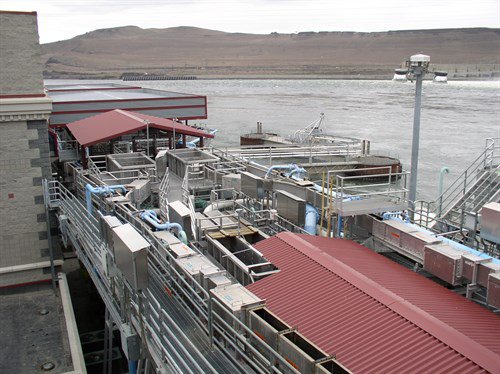Council faces hot environmental topics
- November 27, 2013
- John Harrison

The juvenile fish bypass and sampling facility at McNary Dam on the Columbia River
Toxic contaminants in the Columbia River.
Climate change impacts in the Columbia River Basin.
Salmon and steelhead survival at hydropower dams.
The future role of fish hatcheries.
These are just four of the issues that are attracting attention, and in some cases opposing views from the public, in recommendations (and public comments on them) to amend the Council’s Columbia River Basin Fish and Wildlife Program.
The Council amends the program every five years. The current schedule calls for the Council to release a draft program for public review and comment next February, and make a final decision on the new program in July.
As the staff and Council members work to develop the draft program, the following are among a number of emerging issues that have been identified for in-depth discussions at upcoming meetings of the Council and its Fish and Wildlife Committee:
- Toxic contaminants related to Columbia River hydropower dam development, operations, and inriver habitat conditions
- Hydropower dam operations (enhanced spill, flow, reservoir filling and drawdowns, and additional fish-monitoring requirements)
- Reinstating an exemption process for hydropower developments in protected areas, and possibly expanding protected areas
- The role of hatcheries or artificial production of fish in the program, including how to monitor and evaluate the effects of hatchery fish on fish that spawn and rear in the wild
- Reintroducing salmon and steelhead to areas blocked by hydropower dams, such as above Chief Joseph and Grand Coulee dams on the Columbia
- Identifying priorities for a range of activities including new work to improve fish and wildlife habitat, and paying for operations and maintenance of habitat projects
More information about the program amendment process is posted on a special page on the Council’s website.



